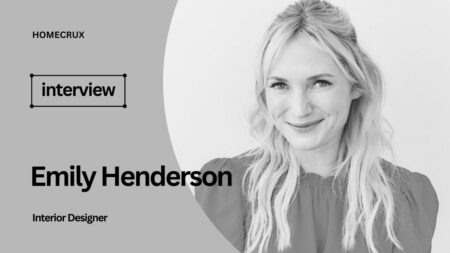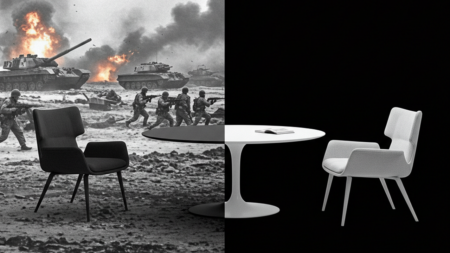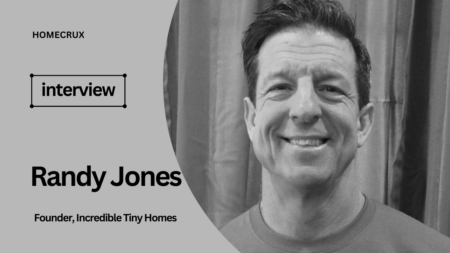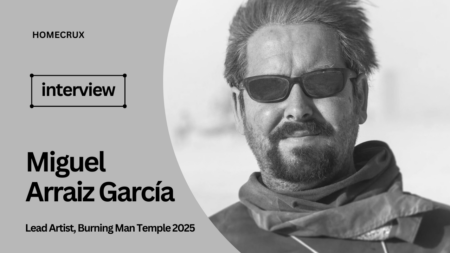We first got in touch with Jeff Forrest in May 2022 when the STACKLAB founder was gearing up for Salone del Mobile 2022 where the studio was presenting its pendant lighting collection. After an unforeseen delay, we were finally able to get into a video conversation with the Toronto-based designer earlier this month.
Jeff talks vividly about his journey, first as an architecture student and then using material as an integral part of design. Further touching upon STACKLAB’s association with prominent names like Sarah Coleman and Anthony Frank Keeler and about the birth and idea behind STACKABL Before we divulge too much, let’s dive into the interview.
Homecrux (HC): Thanks for your time! So, who is Jeff Forrest?
Jeff Forrest (JF): Well, I can answer that question in 50 different ways but I think in the context of design, I’m an architect insofar as formal training is concerned. I come from Calgary, Western Canada, and have a very entrepreneurial spirit, and a pragmatic approach to design as a function of that.
HC: Take us through some of the highs and lows you encountered while learning the craft.
JF: I studied architecture in New York at the New York Institute of Technology, and then in Calgary and Barcelona through the University of Calgary for my post graduate studies. So I’ve got a relatively broad scope of experience.
In my last year of my Master’s, I started to crave being in the field and actually building things. So I left school, got on my motorcycle, which was the one tool I had for real applied design, and went on a roughly month-long trip through the Rockies with a friend. When I was in Boulder, Colorado, I got a call from another friend in who convinced me to come join him in Toronto for the summer to work in a timber mill. He sold it as way to take my mind off of academia. Just a couple of months of working with our hands; chainsaws out, shirts off – that kind of thing.
So I beelined it to Toronto and instantly got inspired by working with this old, very storied timber that this particular mill worked with. I was especially taken with their inventory of excavated hemlock timbers that were once used in the wharf front in Toronto. They had been buried underground for over 100 years and took on the rich colors of the minerals in the soil. They had this incredible regional fingerprint that spoke to me.
That’s when I developed a deep appreciation for storied materials with big narratives. I genuinely saw it as precious stuff, so I started building systems around how to work the material without producing any waste.
HC: How did STACKLAB come into existence?
JF: I would say shortly after we started winning a few small RFPs, I got fired…I was young and hot headed and an insubordinate, ambitious prick, honestly… I couldn’t help it. Immediately after I started at the mill, I started thinking as an entrepreneur and of ways to turn what we were doing at the mill into a design business and I had regular disagreements with the owner. Nonetheless, I took all the contracts I had won with me, and before long, the landlord who owned the space that we were working out of called me up and suggested we work together instead. He had a construction business, and tools and infrastructure. So, it was a good match at the time.
We ended up starting a business that eventually became STACKLAB. Initially, it was really a simple series of commissions centered around material and material reuse. Over time we expanded that concept into collections of furniture, installations and architecture.
Over time, I’ve really grown to love products. STACKLAB has evolved yet again into a business that focuses primarily on speculative work that we sell – save for a small handful of loyal clients that we still service. And that’s where we’re at right now.
HC: You said you are a multidisciplinary designer, but is there a favorite niche?
JF: Right now? Yes. I am most interested in that space where design and software development overlap. We’re starting to embrace software development as an essential tool for contemporary design. Basically, software development helps us make sense of more variables as we pursue more ambitious projects.
I would say that right now, I see myself as a true design generalist, no specialization, totally agnostic when it comes to approaching materials or their execution. I’m interested in looking at problems objectively, and building teams and infrastructure to solve them.
HC: You’re from Toronto, how is the design landscape in Canada, and what role is STACKLAB playing that differentiates it from the competition?
JF: It’s funny you say this. My wife thinks I’m a snob, and I think I probably agree. To me, design is not a formal exercise. It’s not about making a beautiful thing. And I think that, unfortunately, it’s often confused as that. I always return to the dictionary definition of the word and see “design” as applied critical thinking, full stop. And so when I look at the landscape in Canada, I actually see a lot of artistry and a lot of craft that is very beautiful and very well rendered. But I would say that from a design standpoint, there’s only a handful of firms, a lot of them up and coming, that are prioritizing contemporary problem- solving over form-making.
The anecdote I use all the time is we solved the problem of where to put our backsides a long time ago. The question is, how do we pursue chair design in a way that really responds to the world we live in now? And so that becomes less about the form of the thing (or space, or whatever) and more about what goes into making it. It has to do with where the material comes from, what that material is, how it’s transported, how it’s processed, and by whom. I think we even have to build how it’s sold, how customization is addressed, how it’s used, and even how it’s paid for into our thinking as well.
So when you ask about the design landscape, I would place emphasis on the definition of “design” before answering. If we agree to define design as a critical exercise, I would say we have a growing design community in Canada – compared to an incredibly established craft and art community. I identify with the former obviously and I like to think we have a seat at that table- or are at least getting there.
HC: How do you pursue design as a concept?
Concept comes from data gathering, data organization and optimization of that data. I know that doesn’t sound sexy, but it really can be. When you collect good, relevant data and express it in a way that is centered in humanity and culture, it can be very conceptually rich, and beautiful.
HC: How do you differentiate design and product? What is the distinguishing line between artistic and that design aspect?
JF: I think there can be a product that is the result of design and there can also be a product that is the result of artistry. I think artistry by definition is a personal expression. Alternatively, while design certainly has an idiosyncratic element to it, it is fundamentally a response to a problem.
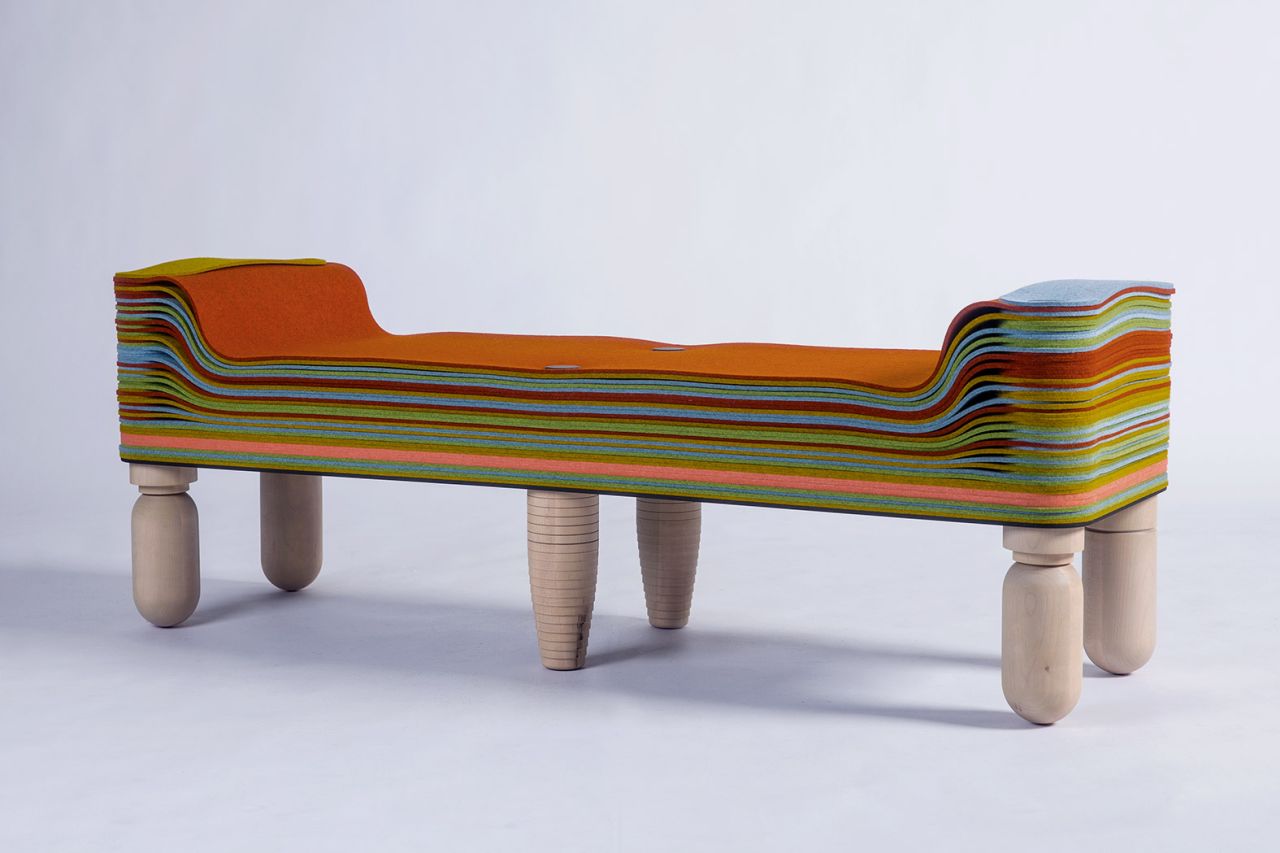
HC: You started with STACKLAB, but now you’re adding STACKABL to the journey. What are the idea and the scope and how different is it from STACKLAB?
JF: That’s a great question. STACKLAB is now a little idea factory where we develop speculative objects and projects and service a few longstanding clients. But really it’s a place where we develop IP. And so the idea with STACKABL is it takes one of our STACKLAB proofs of concept and turns it into a business. It is the first of those initiatives and so far and we’re really excited about it.
HC: You have collaborated with some prominent names like Sarah Coleman, Anthony Keeler and Wisse Trooster for your recent Salone collection. How would you narrate the experience; who are the next big names that STACKABL is scouting?
JF: As I said, I’m a generalist and I get very stimulated working with others. My model is very collaborative. I’m literally the least specialized person in my office. The one thing I’m good at is building teams around a nugget of an idea and getting the team to develop it collectively. So, I learn a lot from people like Sarah, Anthony and Wisse.
Anthony helped us develop our proprietary light discs for our new lighting system and was an integral part of getting this project off the ground. Wisse really helped us expand our narrative and reach, especially in the European market.
I learned something extra special from Sarah. I never imagined that STACKABL would be used in a way that was representational or for cultural commentary. I always figured it would be mostly applied color theory- because that’s how my brain works. But Sarah made her pendants say something that people really identified with. It made them connect to the work in a whole new way. That was a huge learning experience for me. I was totally humbled by it and frankly, very refreshed because it opened us up to a whole new point of view.
When we were exhibiting at Milan Design Week this year, everybody was gravitating toward her works. Not to say the others weren’t very coveted, but hers, in particular, stole the show because they deal with issues that are really relatable in this new, post-pandemic era. Her first fixture ‘2020’ is a cigarette, representing her stress of dealing with that initial year. The second one, “2021,” is a shotgun shell, representing her increased stress and frustration as the pandemic raged on.
And then her last fixture, “2022,” is a pregnancy test that I interpret in part as a surrender to the pandemic and also as a response on the overturning of Roe v. Wade, which was (and is) obviously such as loaded thing. When we were exhibiting, everybody loved her narrative arc. Now, here we are back to the art vs design thing. While STACKABL is definitely a design product, I learned from Sarah that this platform could be a vehicle for artistic expression. It was humbling when I saw how engaged people were when there was an artistic element to the product. Something to think about, no?
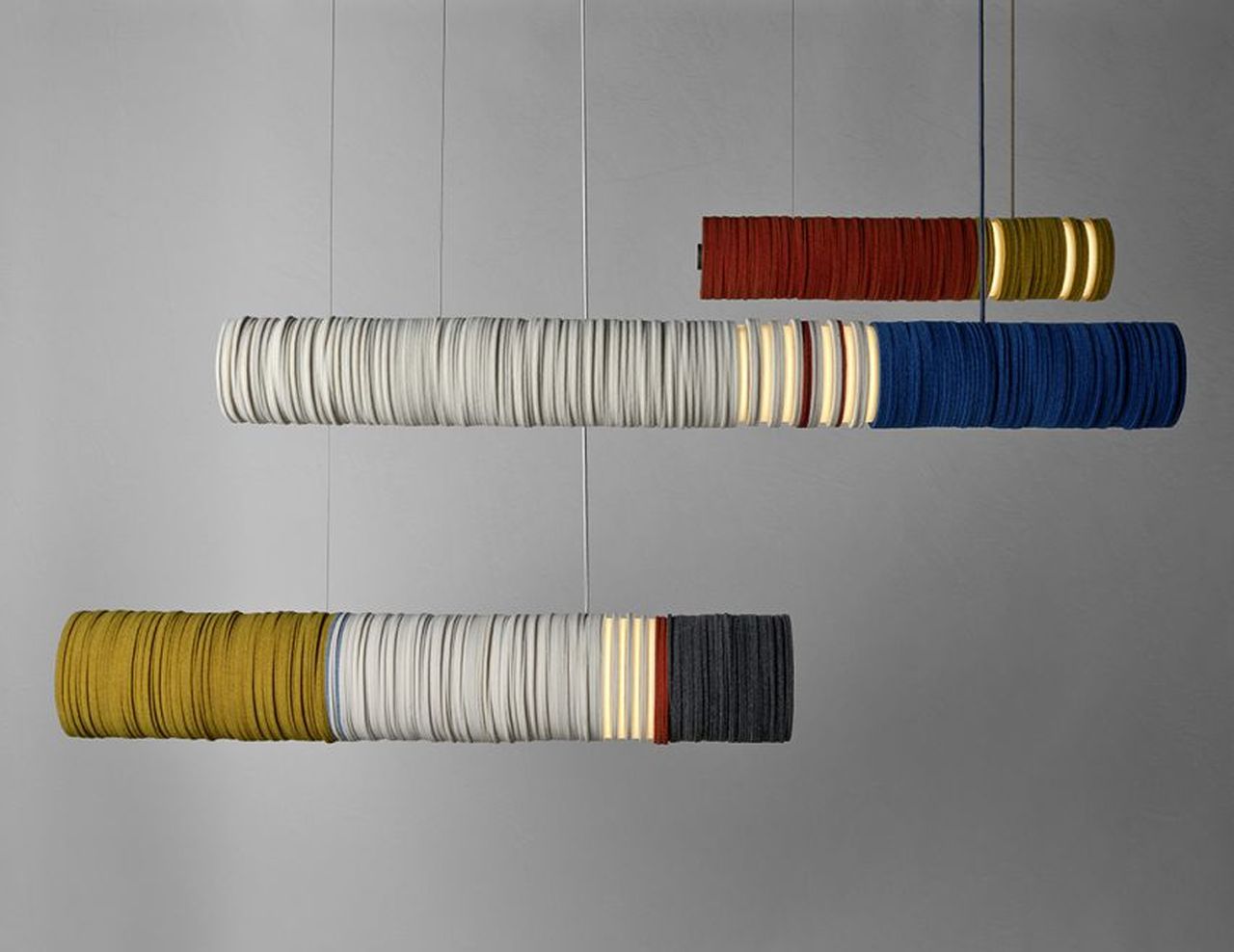
HC: Would you like to give our audience a sneak peek at what’s cooking inside the STACKLAB and/or STACKABL studios?
JF: Right now, we’re learning. I mean, STACKABL is a prototypic platform. We’re learning what users like and what they don’t, and we’re improving it. We’re offering little tweaks each week.
Amazingly, as much as I thought people loved customization we find that when people are in the configurator, it’s a little bit overwhelming for some, not for all. But there’s a chunk of the population that wants to have available SKUs that they can just buy. So we’re working on creating more fixed configurations in the medium term.
We’re also prepping for a group show at the Mindy Solomon Gallery in Miami starting September 21st, 2022, where we’ll reveal a new collection of 10 designs we developed with Mindy. Think Miami 1989. It’ll be really fun.
In the longer term, we have something cooking with NC-Arte in Colombia. More on that soon.
Follow Homecrux on Google News!

